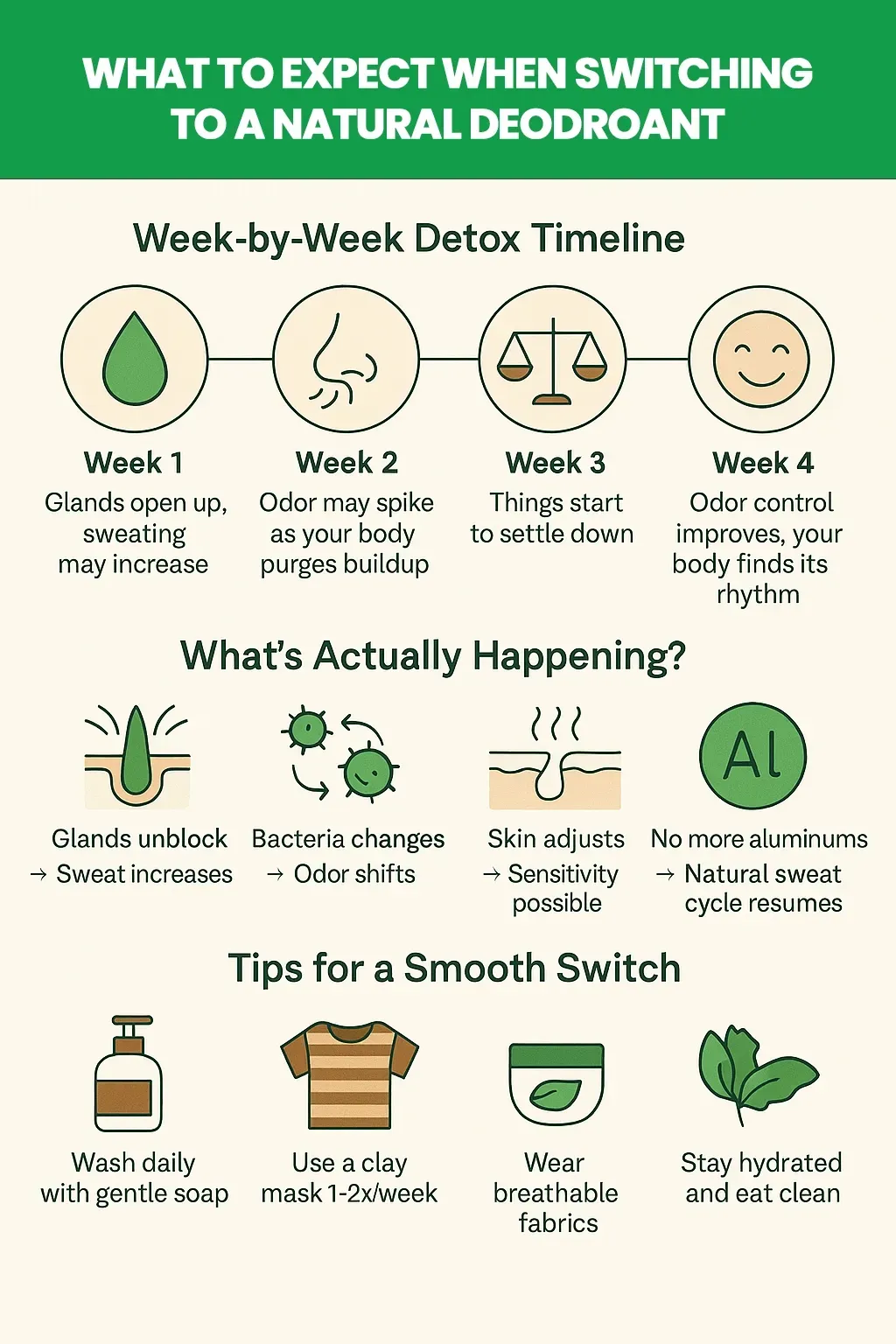How to Make the Switch to a Natural Deodorant?
Switching to natural deodorant means stopping the use of antiperspirants and using a product made without aluminum, synthetic fragrance, or harsh preservatives. During the first few weeks, your body may go through a detox period. With the right approach, the transition is manageable and often worth it for long-term odor control without chemical buildup.
What Happens During the Detox Period
When you stop using traditional antiperspirants, your body may begin to flush out the buildup of sweat-blocking ingredients like dangerous aluminums and synthetic fragrance. This can cause a temporary increase in sweat and odor, which is often referred to as the “detox” phase. Your sweat glands, no longer blocked, start working as intended again. This is a natural process, not a reaction to the natural deodorant itself.
You might notice:
- More sweating than usual
- A stronger or unfamiliar body odor
- Skin feeling more sensitive in the underarm area
These symptoms typically ease after a couple of weeks as your body balances itself out.
How Long it Takes to Adjust
Most people adjust to natural deodorant within 2 to 4 weeks. Some notice a smoother transition in just a few days, while others may need a bit more time.
Week-by-week overview:
- Week 1: Everything may feel normal, or you may start to sweat more.
- Week 2: This is often when odor becomes more noticeable. Stick with it.
- Week 3: Sweat and odor typically begin to settle down.
- Week 4: Your body should feel more balanced, and the deodorant starts working as expected.
If you're still having trouble after four weeks, it might be worth trying a different formula or looking at other factors like diet, stress, or fabric choices.
Tips to Help with the Transition
A little preparation can make the switch smoother. Here are some simple steps to support your body and avoid common issues.
Support your body during detox:
- Clean your underarms daily with a gentle soap. Bacteria buildup is the main cause of odor.
- Use a clay or charcoal-based mask on your underarms once or twice a week during the first month. These can help draw out impurities.
- Stay hydrated and eat clean. What you put in your body can affect how you smell.
- Wear breathable fabrics like cotton to help manage moisture.
What ingredients to look for in a natural deodorant:
- Magnesium hydroxide (help neutralize odor-causing bacteria)
- Arrowroot powder, mineral salts, tapioca starch, or kaolin clay (help absorb moisture)
- Essential oils like tea tree, lavender, or eucalyptus (natural odor fighters)
- Butters and oils like shea, coconut, or jojoba (soothe and condition skin)
Common pitfalls to avoid:
- Switching too quickly between products. Give each formula a fair chance before moving on.
- Overapplying. More isn’t better. Too much product can cause buildup or irritation.
- Expecting dryness. Natural deodorants don't block sweat. That’s the job of an antiperspirant. The goal here is to allow your body to sweat and stay odor-free.
- Ignoring irritation. If your skin is reacting, take a break or try a sensitive skin formula without baking soda or fragrance.
If you’re thinking about switching, the key is patience. A natural deodorant won’t plug your sweat glands, but it can keep odor under control while letting your body work the way it’s meant to.

